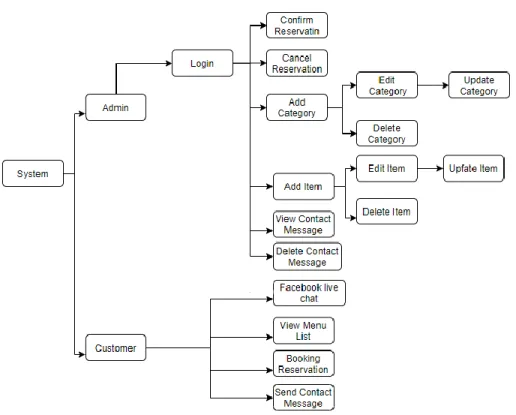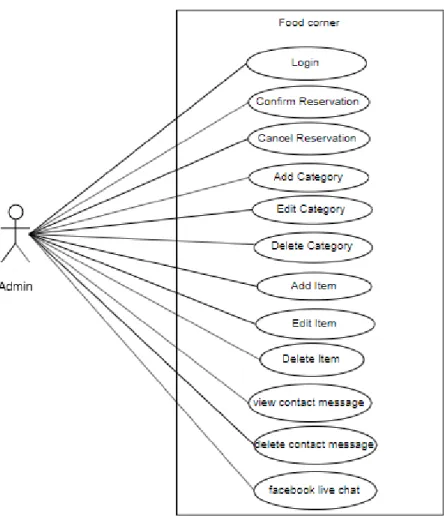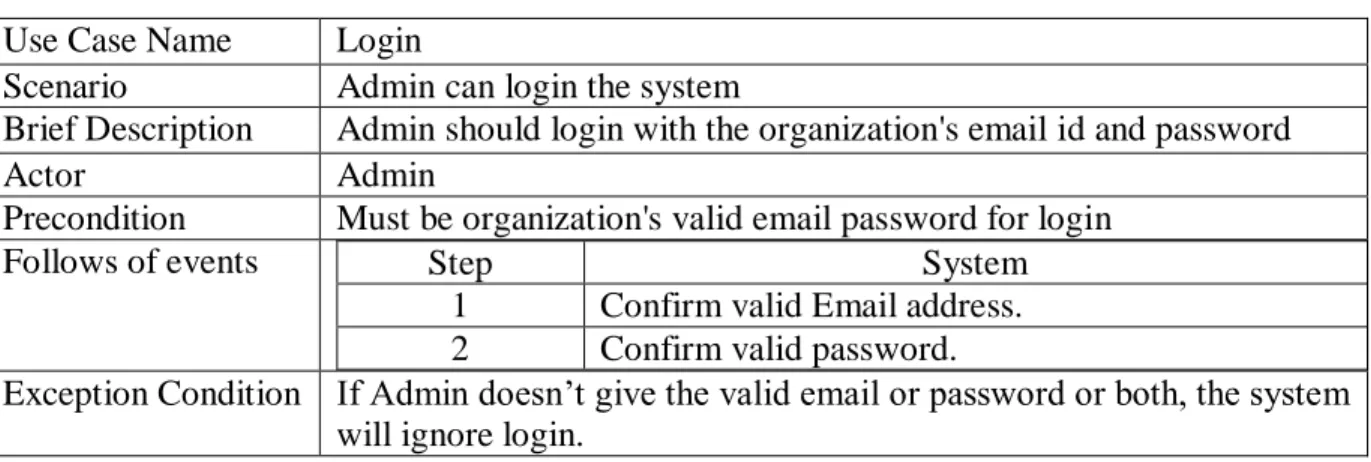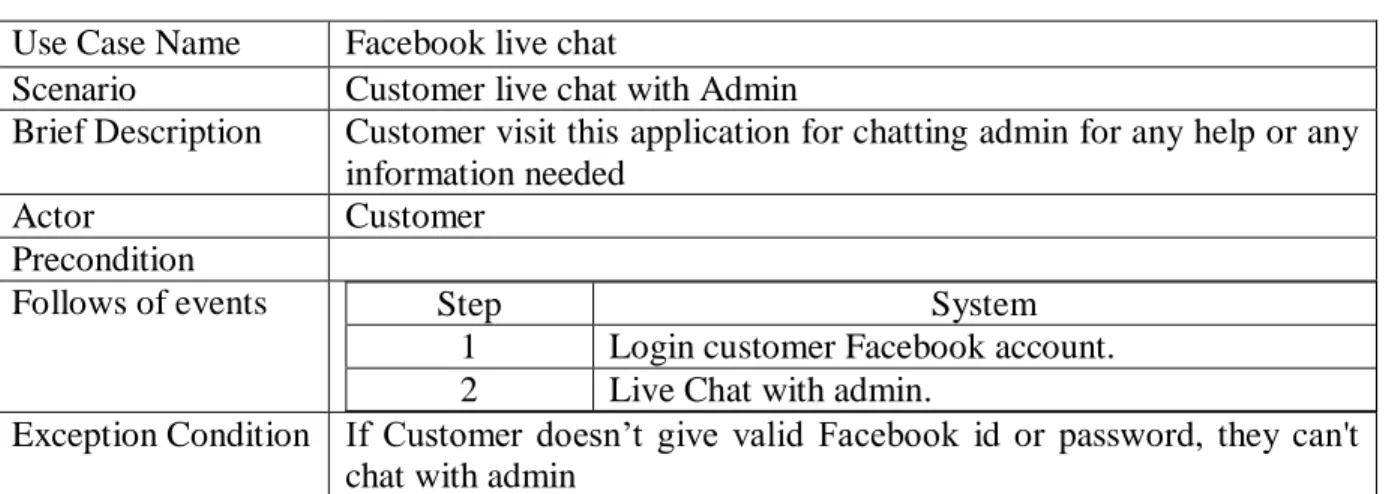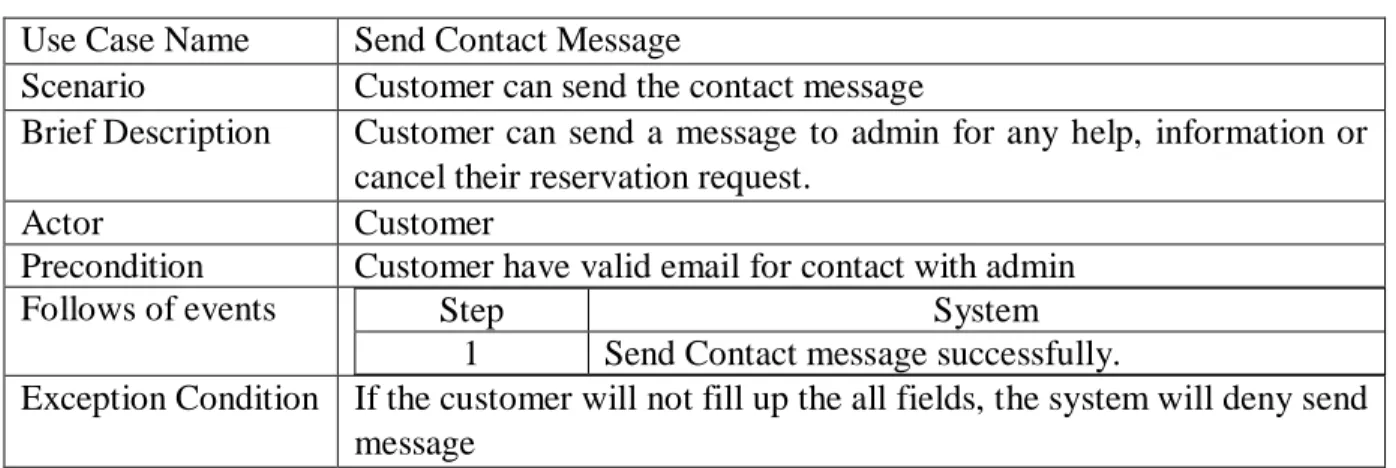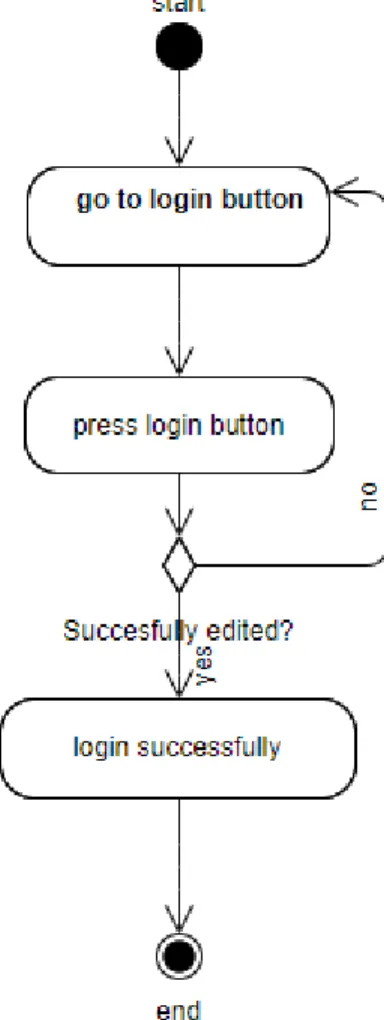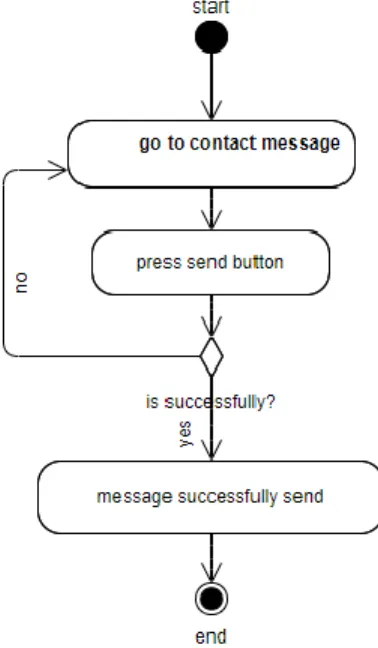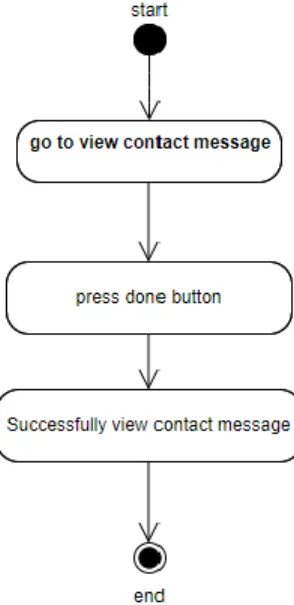©Daffodil International University i
Title: Online Food Corner
Submitted by
Sk Mahadi hasan ID: 152-35-1291 Sanjida Dristy ID: 143-35-793
Department of Software Engineering Daffodil International University
Supervised by
Ms. Fatama Binta Rafiq Lecturer
Department of Software Engineering Daffodil International University
This Project report has been submitted in fulfillment of the requirements for the Degree of Bachelor of Science in Software Engineering.
© All right Reserved by Daffodil International University Fall 2019
©Daffodil International University ii
DECLARATION
We hereby declare that, this project report submitted to the Daffodil International University, is arecord of an original work done by me under the guidance of Ms. Fatama Binta Rafiq, Lecturer at the department of Software Engineering, Daffodil International University. We also declare that the project reported in this document has not been submitted to any other University or Institute for the award of any degree or diploma.
Submitted By: Submitted By:
--- --- Sk Mahadi Hasan Sanjida Dristy
Id: 152-35-1291 Id:143-35-793
Department of Software Engineering Department of Software Engineering
Faculty of Science and Information Technology Faculty of Science and Information Technology
Daffodil International University
Certified By:
--- Fatama Binta Rafiq
Lecturer
Department of Software Engineering
Faculty of Science and Information Technology Daffodil International University
©Daffodil International University iii
ACKNOWLEDGEMENT
Alhamdulillah, I have been successfully complete the project by the thankfulness of almighty Allah. I would acknowledge many respectable individuals whose have been contributed for the preparations of the project in different stages.
First, l would like to thanks from my heart to my parents to give the opportunity for Studying in software engineering. They made my way easier to achieve my goals and my dreams, without them it will not be possible.
I would disclose my deepest thanks to my respectable supervisor and teacher Ms. Fatama Binta Rafiq ,Lecturer, Department of Software Engineering, Daffodil International University .She is the coolest person I had ever seen and she had lot of experience in the software engineering field.
Her valuable advice, supervision and lot of experience made it easier to complete the project.
thankfulness from my heart to Honorable Dr. Touhid Bhuiyan, Head, Department of Software Engineering, for his gracious aid to end my project. Also, thanks from my heart to my honorable faculty member and staff of the Software Engineering department of Daffodil International university. My achievement to this project did not make it successful without the help of my course mate.
Finally, I would like to disclose my grasp to the readers, reviewers of this document who will send me criticisms for further improvement.
©Daffodil International University iv
ABSTRACT
This project is “Online Food Corner”. This purpose of my project is to develop an online application where the customer can book reservation.
Every software development follows some rules and method. I also following some method to develop this. My whole project work will follow the agile methodology. Which is best software development process to develop a software. I choose it because my whole project needs to implement some part then test it and agile methodology will help me to reduce the project risk.
©Daffodil International University v
TABLE OF CONTENT
DECLARATION ... ii
ACKNOWLEDGEMENT ... iii
ABSTRACT ... iv
TABLE OF CONTENT ... v
CHAPTER 1 ... 1
INTRODUCTION ... 1
1.1. Project Overview ... 1
1.2. Project Purpose ... 1
1.2.1. Background ... 1
1.2.2. Benefits and Beneficiaries ... 1
1.2.3. Goals ... 2
1.3. Stakeholders ... 2
1.4. Proposed System Model (Block Diagram)... 3
1.5 Project Schedule... 4
1.5.1. Gantt Chart ... 4
1.5.2 Release Plan/Milestone ... 5
CHAPTER 2 ... 6
SOFTWARE REQUIRMENT SPECIFICATION ... 6
2.1. Functional Requirements... 6
2.2. Data Requirements ... 6
2.3 Performance Requirements ... 6
2.3.2 Precious or Accuracy Requirements ... 7
2.4 Dependability Requirements ... 7
©Daffodil International University vi
2.5. Maintainability & Supportability Requirement ... 7
2.5.1. Maintenance Requirements... 7
2.5.2 Supportability Requirements ... 7
2.6 Security Requirements... 7
2.6.1 Access Requirements ... 7
2.7. Usability and Human-Interactions Requirements ... 8
2.7.1. Ease of Use Requirements ... 8
2.7.3. Understanding and Politeness Requirements ... 8
2.7.4. Accessibility Requirements ... 8
2.8. Look and Feel Requirements ... 8
2.8.1. Appearance Requirements ... 8
2.8.2. Style Requirements ... 8
2.9 Operational and Environment Requirements ... 8
2.9.1. Expected Physical Environment ... 8
2.9.2. Requirements for interfacing with Adjacent Systems ... 9
2.10. Legal Requirements ... 9
2.10.1. Compliance Requirements ... 9
2.10.2. Standard Requirements ... 9
CHAPTER 3 ... 10
SYSTEM ANALYSIS... 10
3.1. Use Case Diagram ... 10
3.1.1. Customer use case diagram ... 10
3.1.2 Admin use case diagram ... 11
3.2. Use Case Description ... 12
3.3. Activity diagram ... 18
3.3.1. Admin login ... 18
3.3.2. Customer view menu list ... 19
3.3.3. Customer booking reservation ... 19
3.3.4. Customer send contact message ... 20
3.3.5. Customer facebook live chat ... 20
3.3.6. Admin confirm reservation ... 21
3.3.7. Admin cancel reservation... 21
©Daffodil International University vii
3.3.8. Admin add category ... 22
3.3.9. Admin edit category ... 22
3.3.10. Admin delete category ... 23
3.3.11. Admin add item ... 23
3.3.12. Admin edit item ... 24
3.3.13. Admin delete item... 24
3.3.14. Admin view contact message ... 25
3.3.15. Admin delete contact message... 25
Chapter 4 ... 26
System Design Specification ... 26
4.1. Sequence diagram ... 26
4.1.1. Admin login ... 26
4.2.2. Customer view menu list ... 26
4.2.3. Customer booking reservation ... 27
4.2.4. Customer send message... 27
4.2.5. Customer Facebook live chat ... 28
4.2.6. Admin Confirm reservation ... 28
4.2.7. Admin cancel reservation... 29
4.2.8. Admin add category ... 29
4.2.9. Admin edit category ... 30
4.2.10. Admin delete category ... 30
4.2.11. Admin add item ... 31
4.2.12. Admin edit item ... 31
4.2.13 Admin delete item ... 32
4.2.14. Admin view contact message ... 32
4.2.15 Admin delete message ... 33
4.2. Class diagram... 34
4.3. Entity Relationship Diagram ... 35
4.4. Development tools & technology ... 35
4.4. Implementation Tools & Platforms ... 35
CHAPTER 5 ... 36
©Daffodil International University viii
SYSTEM TESTING ... 36
5.1. Features to be tested ... 36
5.1.1. Features not to be tested ... 36
5.2. Testing Strategies ... 36
5.2.1. Test approach ... 36
5.2.2. Pass/Fail Criteria ... 36
5.2.3. Suspension and Resumption ... 36
5.2.4 Testing Schedule ... 37
5.4. Test Case ... 37
5.4.1. Test case 1 ... 37
CHAPTER 6 ... 39
USER MANUAL ... 39
6.1. User Manual (Admin) ... 39
6.1.1. Admin Login... 39
6.1.2. Admin Dashboard ... 39
6.1.3. Category ... 40
6.1.4 Item ... 40
6.1.5 Reservation ... 41
6.1.6 Contact Message ... 42
6.2. User Manual (Customer) ... 43
6.2.1. Menu list ... 43
6.2.2. Booking reservation ... 44
6.2.3. Contact Message ... 45
6.2.4 Facebook Live Chat ... 46
Chapter 7 PROJECT SUMMARY ... 47
7.1. GitHub Link ... 47
7.2 Critical Evolution ... 47
7.3 Limitations ... 47
7.4 Obstacles & Achievements ... 47
7.5 Future Scope ... 47
CONCLUTIONS ... 48
©Daffodil International University ix
©Daffodil International University 1
CHAPTER 1
INTRODUCTION
1.1. Project Overview
Online Food Corner System is an online web application. Where the customer can visit the system and view menu list. Customer can apply for a table reservation. Customer can contact with Admin for them help and they can also live chat with Admin for contact and help.
Admin login into system and he/she can view the dashboard. Then he/she can accept or reject customer’s reservation request. Admin can view and delete customers messages.
Admin can add, edit and delete category as well as he/she can add item under category. Admin can edit and delete items.
The system automatically send email when admin accept customer’s reservation request.
1.2. Project Purpose 1.2.1. Background
Day by Day life becomes easier to easier and everyone wants to save their valuable time.
Sometimes the Customer come to the restaurant and can't get their favorite food. Some Customer wants to know item’s price. Customer wants celebrate party so they need some seat or table, but sometimes come to the restaurant and they do not get any seat. This system will overcome all the problems and do something modern and valuable.
1.2.2. Benefits and Beneficiaries
This is web-based system and everyone can use this system. There are two types of users in this system. Customer can easily visit the site.
©Daffodil International University 2 After visit the site, customer see the menu list. Customer can book the reservation table through this system. If customer need any help or information, then can send a message or live chat with admin.
List of the operation the system will provide: -
• Customer see the offer item and update new item in slider.
• Customer see the all menu list easily
• Customer know the item price
• Customer can book the reservation with schedule time and date
• If a customer wants to cancel their reservation or any help or information, they send a message to admin for contact
1.2.3. Goals
This system will maintain customer activity. This system has two users, customer and admin.
User can easily visit this site. They can see all menu list with price and also book their table reservation with time and date schedule. For example, customer come to the restaurant and want to know menu list and menu price, in this system customer can see the information from the website. . Customer can book the reservation table through this system. If customer need any help or information, then can send a message or live chat with admin.
1.3. Stakeholders
There are two types of stakeholders
• Customer
• Restaurant
©Daffodil International University 3 1.4. Proposed System Model (Block Diagram)
Figure 1.1: Block diagram (Online Food Corner)
©Daffodil International University 4 1.5 Project Schedule
1.5.1. Gantt Chart
Duration
8 12 10 10 10 10 10 10 10
days days days days days days days days days
Figure 1.2: Gantt chart (Online Food Corner)
©Daffodil International University 5 1.5.2 Release Plan/Milestone
The following contents will be delivered with the project:
• Documentation
•
Individual Resources assignments• Detailed 3months plan
©Daffodil International University 6
CHAPTER 2
SOFTWARE REQUIRMENT SPECIFICATION
A requirement specification for a software system is a complete description of the behavior of a system to be developed and may include a set of use cases that describe interactions the users will have with the software.
It is a structured document setting out detailed description of the system services written as a contract between client and contractor.
2.1. Functional Requirements
•
Menu List Features• Categories and Item administration
•
The system will display a list of all items offered by the restaurant. Must have the system will organize the list of items by items category. The system will display detailed items descriptions and price• System should allow the customer to check the reservation table 2.2. Data Requirements
• Describe how the system will process and store the data elements and logical data groupings identity data archiving requirements
2.3 Performance Requirements
2.3.1 Speed and Latency Requirements
•
Data would be insert in MySQL database in a second• If there are any validation error ,the error would show in one second
©Daffodil International University 7 2.3.2 Precious or Accuracy Requirements
• After login, every successful login user would show the accurate data from the database.
• Customer should book the reservation request and admin could confirm or cancel the request.
• Only the Authentic user can view the authentic data.
2.4 Dependability Requirements .2.4.1. Availability Requirements
• This web application should run on a web browser (Example: Chrome, Firefox) • System should response though customer’s activity and perform immediately.
• This system is a web application & it will available 24hours.
2.5. Maintainability & Supportability Requirement 2.5.1. Maintenance Requirements
• Fixed when the server is hackers attack.
• Fixed bugs when the system will be corrupted.
• Help center if any problems will be happened.
2.5.2 Supportability Requirements
• User manual will be conferred for users with documentations.
2.6 Security Requirements 2.6.1 Access Requirements
•
Registered user will be able to login the admin page.©Daffodil International University 8
• Admin account will be default accounts which will check the customer activity &
management the system.
2.7. Usability and Human-Interactions Requirements 2.7.1. Ease of Use Requirements
• System Maintenance interface should not be depth.
• User interface should easy to use
2.7.3. Understanding and Politeness Requirements
• Customer accounts should be appreciable to the customer.
• User account should be anyone who can browse the internet.
2.7.4. Accessibility Requirements
• This is a web application and this system will be accessible for any device (Computer, Mobile) with the internet connection.
2.8. Look and Feel Requirements 2.8.1. Appearance Requirements 2.8.2. Style Requirements
• The Online Food Corner management system where the customer can see item with price and booking reservation anytime anywhere
2.9 Operational and Environment Requirements 2.9.1. Expected Physical Environment
• The away a physical space is organized and arranged says a lot to customer about what is expected there and the sort of interactions that are welcome. It is important to us to develop an inclusive.
©Daffodil International University 9 2.9.2. Requirements for interfacing with Adjacent Systems
• The user talks to the computer/device via the commands, menu & button on the users interfacing.
• The applications talk to the operating system via the API which defines the parameters that are passed between them.
• Application use protocol to connect a network. The network software uses extra protocols, all of which make up the communications interface
2.10. Legal Requirements
2.10.1. Compliance Requirements
• Utilize services that already pass with complex internationally recognized standards to more easily meet new requirements, such as facility the request of data-subject.
2.10.2. Standard Requirements
• Customer provide all correct information for book their reservation table.
• User used this application system.
• Admin should not need to know any programming knowledge but must to know the management the system.
©Daffodil International University 10
CHAPTER 3 SYSTEM ANALYSIS
3.1. Use Case Diagram
3.1.1. Customer use case diagram
Figure 3.1: Use Case Diagram for customer (Online Food Corner)
©Daffodil International University 11 3.1.2 Admin use case diagram
Figure 3.2: Use case for Admin (Online Food Corner)
©Daffodil International University 12 3.2. Use Case Description
Table 3.1: Admin Login Use Case Name Login
Scenario Admin can login the system
Brief Description Admin should login with the organization's email id and password
Actor Admin
Precondition Must be organization's valid email password for login
Follows of events Step System
1 Confirm valid Email address.
2 Confirm valid password.
Exception Condition If Admin doesn’t give the valid email or password or both, the system will ignore login.
Table 3.2: Customer View Menu list Use Case Name Menu List
Scenario Customer can see the menu list
Brief Description Customer visit this application and they can see all menu items with price
Actor Customer
Precondition Must be run this application.
Follows of events Step System
1 Visit the site.
2 See the menu list
Table 3.3: Customer Booking Reservation Use Case Name Booking Reservation
Scenario Customer can book the reservation
Brief Description Customer visit this website and they can book the reservation with their time and date schedule
Actor Customer
Precondition Must be organization's email and valid phone number for reservation
Follows of events Step System
1 Select time and date.
2 Successfully send booking reservation action
Exception Condition If Customer doesn’t give the valid phone number, their request will not confirm
©Daffodil International University 13 Table 3.4: Customer Facebook live chat
Use Case Name Facebook live chat
Scenario Customer live chat with Admin
Brief Description Customer visit this application for chatting admin for any help or any information needed
Actor Customer
Precondition
Follows of events Step System
1 Login customer Facebook account.
2 Live Chat with admin.
Exception Condition If Customer doesn’t give valid Facebook id or password, they can't chat with admin
Table 3.5: Admin Confirm Reservation Use Case Name Confirm Reservation
Scenario Admin can confirm the reservation
Brief Description Admin can confirm reservation & customer get a confirmation mail.
Actor Admin
Precondition Must admin login the system
Follows of events Step System
1 Confirm reservation
2 Customer get a confirmation mail Exception Condition Valid Admin can confirm the reservation
Table 3.6: Admin Cancel Reservation Use Case Name Cancel Reservation
Scenario Admin can cancel the reservation
Brief Description If Customer schedule time or table will not be available or customer phone number isn’t validating, admin can cancel their reservation request
Actor Admin
Precondition Must admin login the system
Follows of events Step System
1 Confirm delete reservation Exception Condition Valid Admin can cancel the reservation
©Daffodil International University 14 Table 3.7: Admin Add Category
Use Case Name Add Category
Scenario Admin can add category
Brief Description Admin can category which are available or needed.
Actor Admin
Precondition Admin login the system
Follows of events Step System
1 Successfully add category Exception Condition Valid Admin can add category
Table 3.8: Admin Edit Category Use Case Name Edit Category
Scenario Admin can edit category
Brief Description Admin can edit category where needed.
Actor Admin
Precondition Admin login the system
Follows of events Step System
1 Successfully edit the category Exception Condition Valid Admin can edit the category
Table 3.9: Admin Delete Category Use Case Name Delete Category
Scenario Admin can delete the category
Brief Description Admin can delete the category which are not available or needed.
Actor Admin
Precondition Admin login the system
Follows of events Step System
1 Successfully deleted the category Exception Condition Valid Admin can delete the category
©Daffodil International University 15 Table 3.10: Admin Add Item
Use Case Name Add Item
Scenario Admin can add the item
Brief Description Admin can add the item which are available or needed.
Actor Admin
Precondition Admin login the system
Follows of events Step System
1 Successfully add item.
Exception Condition Valid Admin can add item
Table 3.11: Admin Edit Item Use Case Name Edit Item
Scenario Admin can edit the item
Brief Description Admin can edit the item where will be needed.
Actor Admin
Precondition Admin login the system
Follows of events Step System
1 Successfully edit the item.
Exception Condition Valid Admin can edit the item
Table 3.12: Admin Delete Item Use Case Name Delete Item
Scenario Admin can delete the item
Brief Description Admin can delete the item which are not available or needed.
Actor Admin
Precondition Admin login the system
Follows of events Step System
1 Successfully delete the category.
Exception Condition Valid Admin can delete the category
©Daffodil International University 16 Table 3.13: Customer Send Contact Message
Use Case Name Send Contact Message
Scenario Customer can send the contact message
Brief Description Customer can send a message to admin for any help, information or cancel their reservation request.
Actor Customer
Precondition Customer have valid email for contact with admin
Follows of events Step System
1 Send Contact message successfully.
Exception Condition If the customer will not fill up the all fields, the system will deny send message
Table 3.14: Admin View Message Use Case Name View Contact message
Scenario Admin can view the contact message
Brief Description Admin can view the customer’s message, admin can mail or phone to a customer for any help or information
Actor Admin
Precondition Admin login the system
Follows of events Step System
1 Successfully view the message.
Exception Condition Valid Admin can view the customer’s message
Table 3.15: Admin Delete Message Use Case Name Delete Contact message
Scenario Admin can delete the contact message
Brief Description Admin can delete the customer’s message, when it’s no more needed or after view message or contact
Actor Admin
Precondition Admin login the system
Follows of events Step System
1 Successfully deleted the message.
Exception Condition Valid Admin can delete customer’s message
©Daffodil International University 17 Table 3.16: Admin Facebook Live Chat
Use Case Name Facebook live chat
Scenario Admin live chat with the customer
Brief Description Admin can live chat with customer, for this admin chatting with the customer by using facebook messenger
Actor Admin
Follows of events Step System
1 Going to the admin Facebook page.
2 Live Chat with the customer.
Exception Condition If admin forget his Facebook email or password, cannot chatting with the customer
©Daffodil International University 18 3.3. Activity diagram
3.3.1. Admin login
Admin will login to the system after successfully submitted correct user name and password.
Figure 3.3.1: Activity diagram (Online Food Corner)
©Daffodil International University 19 3.3.2. Customer view menu list
Customer will see the menu list after press menu list button.
Figure 3.3.2: Activity Diagram (Online Food Corner) 3.3.3. Customer booking reservation
Customer will booked reservation after successfully submitted the reservation form.
Figure 3.3.3: Activity diagram (Online Food Corner)
©Daffodil International University 20 3.3.4. Customer send contact message
Customer will send message after submitting the contact form.
Figure 3.3.4: Activity diagram (Online Food Corner) 3.3.5. Customer facebook live chat
Customer will able to live chat after after login with facebook.
Figure 3.3.5: Activity diagram (Online Food Corner)
©Daffodil International University 21 3.3.6. Admin confirm reservation
Admin will confirm the reservation if the seat is available.
Figure 3.3.6: Activity diagram (Online Food Corner) 3.3.7. Admin cancel reservation
Admin will cancel the reservation if the seat is not available.
Figure 3.3.7: Activity diagram (Online Food Corner)
©Daffodil International University 22 3.3.8. Admin add category
Admin will add category after submitting add category form.
Figure 3.3.8: Activity diagram (Online Food Corner) 3.3.9. Admin edit category
Admin will edit category after submitting edit category form.
Figure 3.3.9: Activity diagram (Online Food Corner)
©Daffodil International University 23 3.3.10. Admin delete category
Admin will delete category after submitting delete.
Figure 3.3.10: Activity diagram (Online Food Corner) 3.3.11. Admin add item
Admin will add item after submitting add item form.
Figure 3.3.11: Activity diagram (Online Food Corner)
©Daffodil International University 24 3.3.12. Admin edit item
Admin will edit item after submitting edit item form.
Figure 3.3.12: Activity diagram (Online Food Corner) 3.3.13. Admin delete item
Admin will delete item after submitting delete.
Figure 3.3.13: Activity diagram (Online Food Corner)
©Daffodil International University 25 3.3.14. Admin view contact message
Admin will view contact message after pressing the view button.
Figure 3.3.14: Activity diagram (Online Food Corner) 3.3.15. Admin delete contact message
Admin will delete contact message after pressing the delete button.
Figure 3.3.15: Activity diagram (Online Food Corner)
©Daffodil International University 26
Chapter 4
System Design Specification
4.1. Sequence diagram 4.1.1. Admin login
Figure 4.2.1: Sequence Diagram (Online Food Corner)
4.2.2. Customer view menu list
Figure 4.2.2: Sequence diagram (Online Food Corner)
©Daffodil International University 27 4.2.3. Customer booking reservation
Figure 4.2.3: Sequence diagram (Online Food Corner) 4.2.4. Customer send message
Figure 4.2.4: Sequence diagram (Online Food Corner)
©Daffodil International University 28 4.2.5. Customer Facebook live chat
Figure 4.2.5: Sequence diagram (Online Food Corner)
4.2.6. Admin Confirm reservation
Figure 4.2.6: Sequence diagram (Online Food Corner)
©Daffodil International University 29 4.2.7. Admin cancel reservation
Figure 4.2.7: Sequence diagram (Online Food Corner) 4.2.8. Admin add category
Figure 4.2.8: Sequence diagram (Online Food Corner)
©Daffodil International University 30 4.2.9. Admin edit category
Figure 4.2.9: Sequence diagram (Online Food Corner) 4.2.10. Admin delete category
Figure 4.2.10: Sequence diagram (Online Food Corner)
©Daffodil International University 31 4.2.11. Admin add item
Figure 4.2.11: Sequence diagram(Online Food Corner) 4.2.12. Admin edit item
Figure 4.2.12: Sequence diagram (Online Food Corner)
©Daffodil International University 32 4.2.13 Admin delete item
Figure 4.2.13: Sequence diagram (Online Food Corner) 4.2.14. Admin view contact message
Figure 4.2.14: Sequence diagram (Online Food Corner)
©Daffodil International University 33 4.2.15 Admin delete message
Figure 4.2.15: Sequence diagram (Online Food Corner)
©Daffodil International University 34 4.2. Class diagram
Figure 4.3: Class diagram (Online Food Corner)
©Daffodil International University 35 4.3. Entity Relationship Diagram
Figure 4.4: Database design diagram (Online Food Corner)
4.4. Development tools & technology
HTML
CSS3
Bootstrap 4
JQuery Plugins
4.4. Implementation Tools & Platforms
Laravel Framework
MySQL
PhpMyAdmin
Xampp
©Daffodil International University 36
CHAPTER 5
SYSTEM TESTING
5.1. Features to be tested
• Admin login
• Make a reservation
• Live chat
5.1.1. Features not to be tested
• Order
• Payment
5.2. Testing Strategies 5.2.1. Test approach
• The entire system will be tested manually.
• The system testing based on the customer.
5.2.2. Pass/Fail Criteria
• System will crash considered as the fail case.
• The test will pass if the event conference the object design requirement or fail or not.
•
List all results that decide the test case is passed or failed.5.2.3. Suspension and Resumption
• The system will be pass the if every develop is successfully if not then it’s try again.
• The system should works rightly after each change in the design
©Daffodil International University 37 5.2.4 Testing Schedule
Table 5.1: Testing Schedule (Online Food Corner)
Test Phase Days Owner Test plan creation 7 days Sk. Mahadi Hasan Test specification creation 10 days Sk. Mahadi Hasan Test specification team
review
10 days Sk. Mahadi Hasan Component testing 10days Sk. Mahadi Hasan Integration testing 10days Sk. Mahadi Hasan System testing 15 days Sk. Mahadi Hasan
Figure 5.1: Testing Schedule (Online Food Corner) 5.4. Test Case
5.4.1. Test case 1
Table 5.2: Test case 1
Test case : 1 Test case name : Login
System : Online Food Corner Subsystem: N/A
Designed by : Farhad Design date : 15-10-2019
Executed by : Farhad Executed date : 17-11-2019
Pre-condition : User must be login with valid email and password.
Test case ID
Description Expected System Response
Input Output
Comment 1 When a user click’s the
login button without email and password
Email & Password required.
Email:
Password:
Pass Email &
Password required.
2 When a user enter email without password
The process show, password is required.
Email:mail2skf [email protected] om
Password:
Pass Password required.
©Daffodil International University 38 3 When a user enters the
password without email
The process show, mail is required.
Email:
Password:mail 720
Pass Mail required.
4 When a user enters valid email and wrong password.
The process show, password is incorrect
Email:mail2skf [email protected] om
Password:mail 720adfaefdv
Pass Invalid login attempts
5 When a user enters valid password and wrong email.
The process show, email is not found.
Email:mail2skf arhad.gmail.co m
Password:mail 720
Pass Invalid login attempts
6 When a user enters the wrong email and wrong password.
The process show, email is not found.
Email:mail2skf arhad.gmail.co m
Password:mail 720adfgd
Pass Invalid login attempts
7 When a user enters valid password and valid email.
The system will successfully access to the account and redirect to the dashboard
Email:mail2skf [email protected] om
Password:mail 720
Pass Login attempts successful
©Daffodil International University 39
CHAPTER 6 USER MANUAL
6.1. User Manual (Admin) 6.1.1. Admin Login
Admin need to provide valid email & password to login into the system
Figure 6.1: Admin login (Online Food Corner) 6.1.2. Admin Dashboard
After login successfully, admin will see his/her home page & operate his/her work.
Figure 6.2: Admin dashboard (Online Food Corner)
©Daffodil International University 40 6.1.3. Category
After click category, here admin can add a new category, edit category and delete category
Figure 6.3: Categories (Online Food Corner)
6.1.4 Item
After click, admin can manage here add, edit and delete the item.
Figure 6.4: Items (Online Food Corner)
©Daffodil International University 41 6.1.5 Reservation
After click reservation, admin can confirm or cancel customer reservation request
Figure 6.5: Reservation (Online Food Corner)
©Daffodil International University 42 6.1.6 Contact Message
After click contact message, admin can view & delete the contact message
Figure 6.6: Contact Message (Online Food Corner)
©Daffodil International University 43 6.2. User Manual (Customer)
6.2.1. Menu list
After visit this system, customer can choose the menu list button for see menu list and price
Figure 6.7: Menu list (Online Food Corner)
©Daffodil International University 44 6.2.2. Booking reservation
Customer booking reservation for a click reservation button.
If customer can't give valid email, the display will show
Figure 6.8: Booking reservation (Online Food Corner)
©Daffodil International University 45 6.2.3. Contact Message
Customer wants to know any information or cancel reservation, they can send a message.
Figure 6.9: Send message (Online Food Corner)
©Daffodil International University 46 6.2.4 Facebook Live Chat
Customer wants to live chat with admin, they choose the messenger sing an option
Figure 6.10: Facebook live chat (Online Food Corner)
©Daffodil International University 47
Chapter 7 PROJECT SUMMARY
7.1. GitHub Link
Link: https://github.com/Farhad009/FinalProject 7.2 Critical Evolution
• At the end of project, you should Investigate the project to evaluate what the project has archived
• Critically evaluate all perspective of the outcome of the project 7.3 Limitations
Every project has some limit, no project can be an accurate fulfill project “Online Food Corner”
it has some limitation
• The project has a reservation getaway, but it’s not view reservation table.
• The project has no online delivery.
7.4 Obstacles & Achievements
Every day technologies are system update, Laravel framework is one which updating a day by day. It’s fully tough to work, but not so difficult. When I am developing the system, there are too many errors occurs.
7.5 Future Scope
Every project has some future scope, so that the application adds some update features. This project has some scope & the scope can be
• Customer can order home delivery.
• Customer can payment online.
There are many features can be updated on this project. But this many features which can't be develop by one person.
©Daffodil International University 48
CONCLUTIONS
All though I’ve developed the system “Online Food Corner” there are lots of limitation in there. I tried my best to overcame my limitations. The Project will help the customers to booking reservation table easily. Alhamdulillah I’ve developed the system for Food lover people and this make me proud.
©Daffodil International University 49 REFERENCES
Database design and diagram [Access on 19 Novembar 2019 11.31 pm]
https://app.creately.com/diagram/5hy8sVwtUKX
Activity Diagram, Use case Diagram, Class Diagram ,Sequence Diagram [Access on 21 September 2019 2.21 am]
https://www.visual-paradigm.com/#
Literature review
https://www.fatbit.com/fab/build-online-restaurant-reservation-website-with-bestfeatures-and- business-model [ Access on 11 July 2019, 1.30am]
